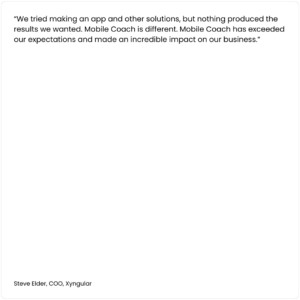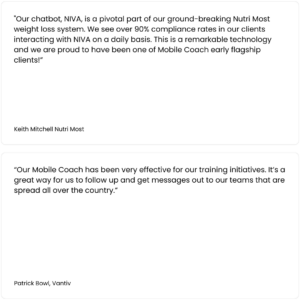[fusion_builder_container hundred_percent=”no” equal_height_columns=”no” menu_anchor=”” hide_on_mobile=”small-visibility,medium-visibility,large-visibility” class=”” id=”” background_color=”” background_image=”” background_position=”center center” background_repeat=”no-repeat” fade=”no” background_parallax=”none” parallax_speed=”0.3″ video_mp4=”” video_webm=”” video_ogv=”” video_url=”” video_aspect_ratio=”16:9″ video_loop=”yes” video_mute=”yes” overlay_color=”” video_preview_image=”” border_size=”” border_color=”” border_style=”solid” padding_top=”” padding_bottom=”” padding_left=”” padding_right=””][fusion_builder_row][fusion_builder_column type=”1_1″ layout=”1_1″ spacing=”” center_content=”no” hover_type=”none” link=”” min_height=”” hide_on_mobile=”small-visibility,medium-visibility,large-visibility” class=”” id=”” background_color=”” background_image=”” background_position=”left top” background_repeat=”no-repeat” border_size=”0″ border_color=”” border_style=”solid” border_position=”all” padding=”” dimension_margin=”” animation_type=”” animation_direction=”left” animation_speed=”0.3″ animation_offset=”” last=”no”][fusion_text]
How to decide which messaging channel is best for you!
1 . Use What’s Familiar
. Use What’s Familiar
One of a chatbot’s greatest strengths is its flexibility. Instead of yet another app that users have to make room for on their device, chatbots offer the power to connect on a platform (or “channel”) that users already have and are familiar with. This clears two hurdles of user engagement. New users don’t have to be convinced to try a new app, and they don’t have to learn how to use it. The ease of use opens new possibilities in attracting and retaining demographics who are less tech savvy.[/fusion_text][/fusion_builder_column][fusion_builder_column type=”4_5″ layout=”4_5″ spacing=”” center_content=”no” hover_type=”none” link=”” min_height=”” hide_on_mobile=”small-visibility,medium-visibility,large-visibility” class=”” id=”” background_color=”” background_image=”” background_position=”left top” background_repeat=”no-repeat” border_size=”0″ border_color=”” border_style=”solid” border_position=”all” padding=”” dimension_margin=”” animation_type=”” animation_direction=”left” animation_speed=”0.3″ animation_offset=”” last=”no”][fusion_text]
2. Use What’s Local
Stateside, no channel is more ubiquitous than SMS (text) messaging. It’s one of the most basic functions of a mobile phone and is used twice as often as a device’s call feature. Facebook Messenger has similar widespread use, with more than a billion global users. But these two aren’t actually the most popular messaging platforms when we zoom out to the global scale. The WeChat messaging app is king in China, while LINE rules in Japan, Thailand, and Indonesia. See our blog post on the different options for more information on which channels are the most popular where.
3. Use What’s Required
Depending on subject matter, the right channel may depend more on security requirements than popularity. For example, chatbots that communicate with users about their private medical information can’t use SMS in the United States. Apps like Telegram, which encrypt communications and are therefore much more secure than SMS, are a better choice to meet security legal requirements and industry regulations.
4. Use a Professional
General guidelines only go so far. Every locality has its own quirks to take into account. For example, while MMS (text messages that can include files, like GIFs) have about the same popularity in Canada as in the United States, there are cell carriers specific to Canada that have much tighter limits on the size of media that can be sent than those stateside. Details like these are why consulting with a chatbot expert can make all the difference.
5. Use Them All
Not all target demographics fit neatly into a single channel. Perhaps your audience is global and needs to appeal to audiences in China and Japan as much as those in Canada and the United States. Not a problem with Mobile Coach. Our authoring platform has the power to build a chatbot that can communicate on as many channels as needed to get users training, selling, or buying.
[/fusion_text][/fusion_builder_column][fusion_builder_column type=”1_5″ layout=”1_5″ spacing=”” center_content=”no” hover_type=”none” link=”” min_height=”” hide_on_mobile=”small-visibility,medium-visibility,large-visibility” class=”” id=”” background_color=”” background_image=”” background_position=”left top” undefined=”” background_repeat=”no-repeat” border_size=”4″ border_color=”#6acf9e” border_style=”solid” border_position=”all” padding=”10 15 10 15″ margin_top=”” margin_bottom=”” animation_type=”” animation_direction=”left” animation_speed=”0.3″ animation_offset=”” last=”no”][fusion_text]
What is a Channel?
Chatbots need a way to deliver their messages to users and receive replies. Whether it’s through a text message, a social media app, or a web page, these options are called “channels.”
[/fusion_text][/fusion_builder_column][fusion_builder_column type=”1_1″ layout=”1_1″ spacing=”” center_content=”no” hover_type=”none” link=”” min_height=”” hide_on_mobile=”small-visibility,medium-visibility,large-visibility” class=”” id=”” background_color=”” background_image=”” background_position=”left top” background_repeat=”no-repeat” border_size=”0″ border_color=”” border_style=”solid” border_position=”all” padding=”” dimension_margin=”” animation_type=”” animation_direction=”left” animation_speed=”0.3″ animation_offset=”” last=”no”][fusion_separator style_type=”single solid” hide_on_mobile=”small-visibility,medium-visibility,large-visibility” class=”” id=”” sep_color=”#3d3d3d” top_margin=”” bottom_margin=”” border_size=”” icon=”” icon_circle=”” icon_circle_color=”” width=”” alignment=”center” /][fusion_text]
About the Author: Cameron Harris
Cameron Harris is a modder, gamer, writer, and occasional fossil hunter. As an Analyst at Mobile Coach he puts his technical expertise to work translating the writing team’s scripts into operational chatbots.
[/fusion_text][/fusion_builder_column][/fusion_builder_row][/fusion_builder_container]





